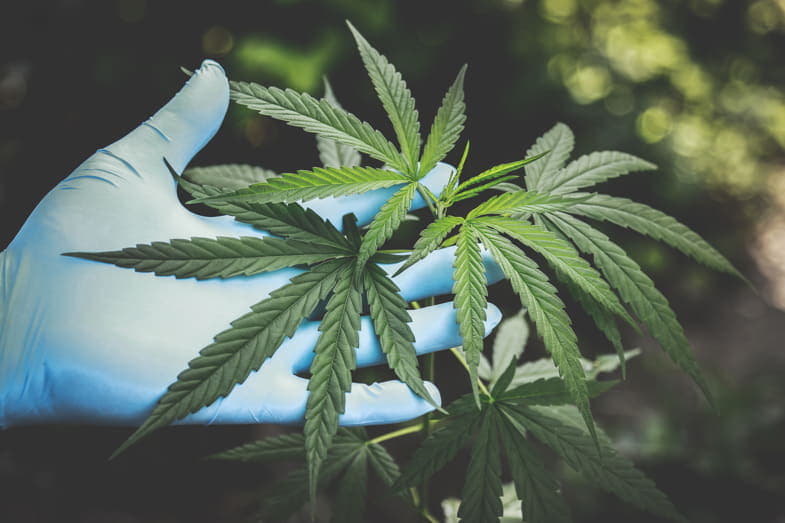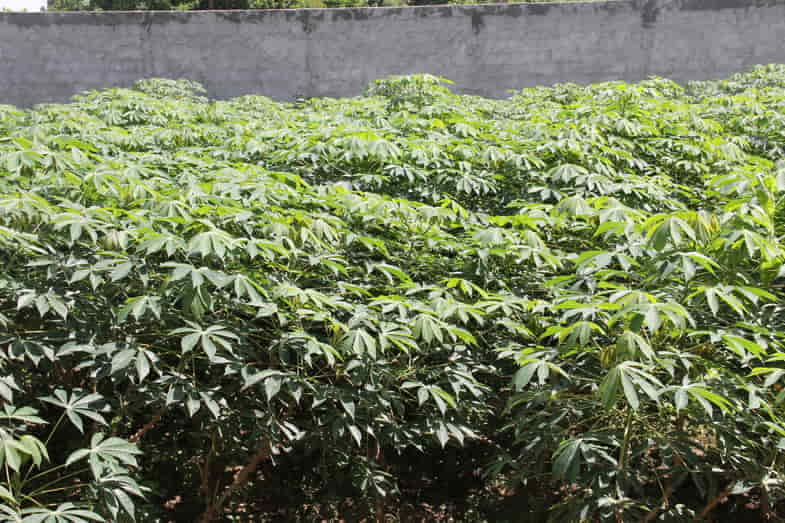Published on: 13/01/2023
At first sight, they can be easily confused with marijuana because of their similarity, but observing carefully, these plants have some significant differences.
Marijuana is a plant notoriously known for its fan-shaped green leaves, as well as for its psychotropic effects.
However, there are other plants that can be easily confused with it due to some similarities between them.
For this reason, some people usually grow these plants together with marijuana, in order to hide the latter from less expert eyes.
Read also: Cannabichromene: all the properties of the ‘little brother of THC’
How to recognize a marijuana plant?


There are some distinctive features that allow you to recognize a marijuana plant. The 3 main ones are:
- Appearance of the leaves and flowers: the leaves of marijuana have a fan shape with various points (they are made up of five to seven leaflets). They are green and can have a smooth or hairy surface. Typically, the smaller leaves that develop on the tops of the plant are covered in a resin that contains cannabinoids (the best known of which is delta-9-tetrahydrocannabinol or THC, which is responsible for the psychotropic effects of marijuana).
- The flowers of the marijuana plant are also very distinctive and can be easily recognized once you know what to look for. First, the flowers are found at the ends of the branches and grow in small clusters. Then, they are usually composed of many small petals and have a range of colors ranging from yellow to purple.
- The characteristic smell: its smell can vary depending on the variety and quality of the plant, as well as the amount of THC present. Some strains of marijuana may have a stronger, more pungent odor, while others may have a less intense odor. These aromas are an indication of the presence of terpenes in the plant. In general, the smell of marijuana is easily recognizable and distinctive.
However, it is important to note that smell alone is not a reliable way to determine whether or not a plant is marijuana. There are other plants that smell similar to marijuana, so you have to rely on other characteristics to identify the plant with certainty.
In general, then, we must not confuse marijuana with hemp. The latter, in fact, is a variety of cannabis sativa that is grown for the production of textile fibers, oils and seeds. Unlike marijuana, it contains only small amounts of THC and does not produce any psychotropic effects.
Read also: Hemp oil: how it is produced and what are the differences with CBD oil
Here are the 3 plants that look the most like cannabis
Now that we have seen its characteristic aspects, we can mention some plants that can easily be confused with marijuana due to their similarity. They are:
- Kenaf (Hibiscus cannabinus).
It is an annual herbaceous plant that belongs to the Malvaceae family. It has an erect stem that can reach 3-4 meters in height, fan-shaped green leaves and yellow or orange flowers. It is cultivated mainly for the creation of textile fibers, but also for the production of biomass for energy purposes. Kenaf is often confused with industrial hemp due to its similar appearance (in particular, for the tall, woody stem and for the leaves fan-shaped). However, Kenaf produces yellow or orange colored flowers, while marijuana flowers, when they bloom, have white hairs that turn yellow, red or purple over time. Clearly, then, Kenaf does not contain THC and does not produce the psychotropic effects of marijuana. - Hibiscus coccineus
Hibiscus coccineus, also known as water hibiscus or marsh hibiscus, is a herbaceous plant of the Malvaceae family. The water hibiscus is native to the tropical regions of North America and is grown (in pots or in water) as an ornamental plant for its beautiful flowers. This plant, which can reach 2 meters in height, produces large and showy flowers red, orange or yellow in color, which attract pollinators such as bees and butterflies. Like marijuana, this plant also has green fan-shaped leaves. For this reason it can be confused with marijuana in the development phase of the plant. However, as soon as the flowers bloom it is impossible not to notice the differences with hemp. - Cassava (Manihot esculenta)
It is a tropical plant belonging to the Euphorbiaceae family. It is native to tropical regions of South America and has been introduced to many other tropical countries as a food and medicinal crop. Cassava grows to about three meters in height and has large, lanceolate leaves. Its flowers are small and yellow or green. Cassava produces a tuberous root, also known as cassava or tapioca, which is used as a source of carbohydrates. Cassava resembles marijuana due to its long, narrow stem and pointed leaves. However, there are also some particularly striking differences between the two plants. For example, marijuana has flowers with small stems, while cassava has flowers without stems. Furthermore, cassava has tuberous and edible roots unlike marijuana. Cassava, in fact, is grown precisely to use its roots in the food sector, since they are a source of carbohydrates. As is well known, however, marijuana is mainly grown for its THC-containing flowers.


In conclusion
We have seen the 3 plants that most resemble cannabis due to the shape and color of the leaves. However, it is important to note that cannabis is a very specific and unique plant with distinctive characteristics that set it apart from other plants.
If you are passionate about the world of cannabis take a look at the Sensory Seeds shop: you will find a selection of the best cannabis seeds online.









